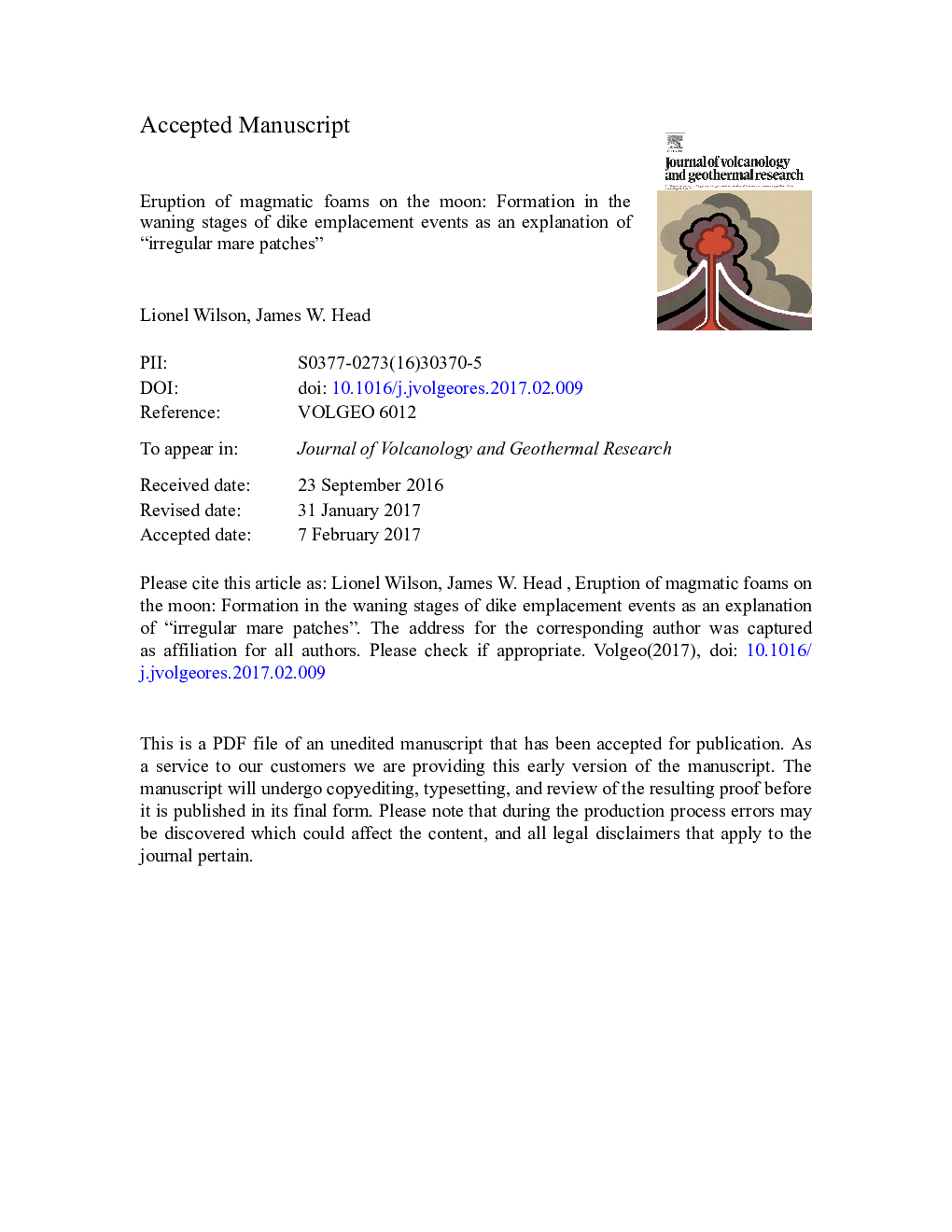| کد مقاله | کد نشریه | سال انتشار | مقاله انگلیسی | نسخه تمام متن |
|---|---|---|---|---|
| 5783931 | 1638288 | 2017 | 53 صفحه PDF | دانلود رایگان |
عنوان انگلیسی مقاله ISI
Eruption of magmatic foams on the Moon: Formation in the waning stages of dike emplacement events as an explanation of “irregular mare patches”
ترجمه فارسی عنوان
فوران فومهای ماگمائی در ماه: تشکیل در مراحل نزول حوادث جابجایی حوضچه به عنوان توضیحی از یک پچا مادری نامنظم
دانلود مقاله + سفارش ترجمه
دانلود مقاله ISI انگلیسی
رایگان برای ایرانیان
کلمات کلیدی
ماه / ماه، آتشفشان ماره تکه های جغرافیایی نامنظم، استرومبولی فوم مگاتیو، دریاچه لاوا، تعویض دایک،
موضوعات مرتبط
مهندسی و علوم پایه
علوم زمین و سیارات
ژئوشیمی و پترولوژی
چکیده انگلیسی
Volcanic eruptions on the Moon take place in conditions of low gravity and negligible atmospheric pressure, very different from those on Earth. These differences lead to characteristic lunar versions of hawaiian and strombolian explosive activity, and to the production of unusual eruption products neither predicted nor observed on Earth in the terminal stages of eruptions. These include the unusual mounds and rough (hummocky, blocky) floors of some small-shield summit pit crater floors, elongate depressions and mare flows (similar to those named “irregular mare patches”, IMPs, by Braden et al., 2014). We examine the ascent and eruption of magma in the waning stages of the eruptive process in small-shield summit pit crater floors and show that many IMP characteristics can be plausibly explained by basaltic magma behavior as the rise rate of the ascending magma slows to zero, volatiles exsolve in the dike and lava lake to form a very vesicular foam, and the dike begins to close. Stresses in the very vesicular and porous lava lake crust produce fractures through which the foam extrudes at a rate determined by its non-Newtonian rheology. Waning-stage extrusion of viscous magmatic foams to the surface produces convex mounds whose physical properties inhibit typical impact crater formation and regolith development, creating an artificially young crater retention age. This mechanism for the production and extrusion of very vesicular magmatic foams is also applicable to waning-stage dike closure associated with pit craters atop dikes, and fissure eruptions in the lunar maria, providing an explanation for many irregular mare patches. This mechanism implies that IMPs and associated mare structures (small shields, pit craters and fissure flows) formed synchronously billions of years ago, in contrast to very young ages (less than ~ 100 million years) proposed for IMPs by some workers.
ناشر
Database: Elsevier - ScienceDirect (ساینس دایرکت)
Journal: Journal of Volcanology and Geothermal Research - Volume 335, 1 April 2017, Pages 113-127
Journal: Journal of Volcanology and Geothermal Research - Volume 335, 1 April 2017, Pages 113-127
نویسندگان
Lionel Wilson, James W. Head,
